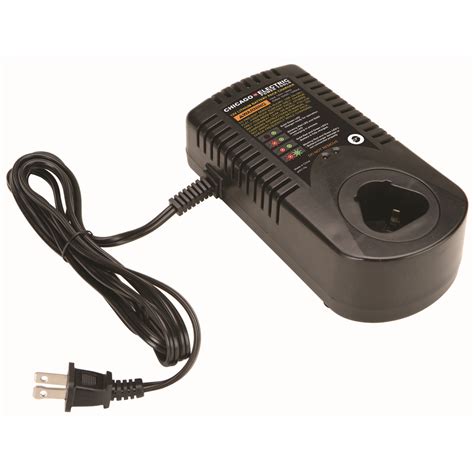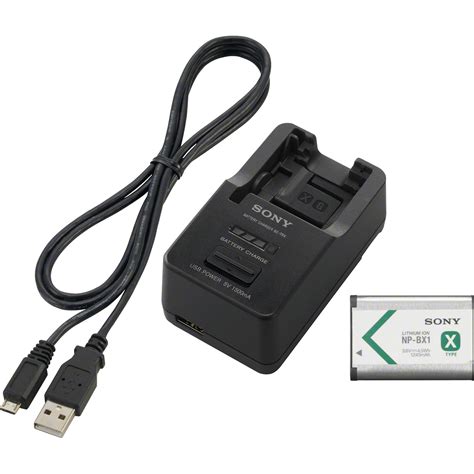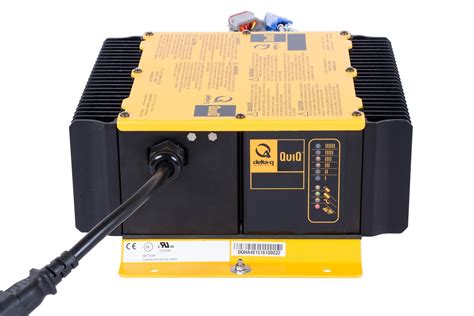Introduction to Lithium Polymer Batteries and Battery Chargers
Lithium Polymer (LiPo) batteries have become increasingly popular in recent years due to their high energy density, lightweight, and compact size. These batteries are widely used in various applications, such as smartphones, tablets, laptops, drones, and remote-controlled vehicles. However, to ensure the longevity and safe operation of LiPo batteries, it is essential to use a reliable and efficient battery charger.
In this article, we will discuss the fundamental concepts of LiPo batteries and battery chargers, and guide you through the process of building a single cell LiPo battery charger project.
Understanding Lithium Polymer Batteries
Lithium Polymer batteries are a type of rechargeable battery that uses a polymer electrolyte instead of a liquid electrolyte. This allows for a more compact and flexible battery design compared to traditional lithium-ion batteries. LiPo batteries are composed of several key components:
- Positive electrode (cathode)
- Negative electrode (anode)
- Polymer electrolyte
- Separator
- Protective circuit module (PCM)
The PCM is an essential component that helps prevent overcharging, over-discharging, and short-circuiting, which can cause damage to the battery or even lead to fire or explosion.
Lithium Polymer Battery Specifications
LiPo batteries come in various shapes, sizes, and capacities to suit different applications. Some key specifications to consider when choosing a LiPo battery include:
- Voltage: Single cell LiPo batteries have a nominal voltage of 3.7V and a fully charged voltage of 4.2V.
- Capacity: Measured in milliamp-hours (mAh), this indicates the amount of energy the battery can store.
- Discharge rate: Expressed as a C-rating, this represents the maximum safe continuous discharge current.
Basics of Battery Charging
To safely and efficiently charge a LiPo battery, it is crucial to understand the basics of battery charging. The charging process involves two main stages: constant current (CC) and constant voltage (CV).
Constant Current (CC) Stage
During the CC stage, the charger supplies a constant current to the battery, typically set at a rate of 0.5C to 1C (where C represents the battery’s capacity). For example, a 1000mAh battery would be charged at a current of 500mA to 1000mA during the CC stage. This stage continues until the battery voltage reaches its fully charged voltage of 4.2V.
Constant Voltage (CV) Stage
Once the battery reaches its fully charged voltage, the charger switches to the CV stage. During this stage, the charger maintains a constant voltage of 4.2V while gradually reducing the charging current. The CV stage continues until the charging current drops to a predetermined level, typically around 0.1C or lower, at which point the battery is considered fully charged.
Charging Safety Considerations
To ensure safe charging and prevent damage to the battery, it is essential to follow these guidelines:
- Use a charger designed specifically for LiPo batteries.
- Never leave the battery unattended while charging.
- Charge the battery in a fire-resistant location away from flammable materials.
- Avoid overcharging the battery, as this can lead to reduced performance and potential safety hazards.

Designing a Single Cell LiPo Battery Charger
Now that we have a basic understanding of LiPo batteries and the charging process, let’s dive into designing a single cell LiPo battery charger.
Key Components
To build a single cell LiPo battery charger, you will need the following components:
- Microcontroller (e.g., Arduino)
- Lithium battery charging module (e.g., TP4056)
- Voltage regulator (e.g., LM7805)
- Current sensing resistor
- LED indicators
- Resistors and capacitors
- PCB or breadboard
- Connectors and wires
Circuit Design
The circuit design for a single cell LiPo battery charger typically includes the following stages:
- Input voltage regulation: A voltage regulator, such as the LM7805, is used to provide a stable 5V input to the charging module.
- Charging module: A dedicated lithium battery charging module, like the TP4056, handles the CC and CV stages of the charging process.
- Current sensing: A current sensing resistor is used to monitor the charging current and provide feedback to the microcontroller.
- Microcontroller: An Arduino or similar microcontroller is used to control the charging process, monitor the battery voltage and current, and provide user feedback through LED indicators.
Here’s a simplified schematic of a single cell LiPo battery charger:
+5V ──────────┬─────────────────────────┬────────────┐
│ │ │
│ │ │
├─────┬──────────────────┬┴┬───────────┤
│ │ │ │ │
│ │ TP4056 │ │ │
│ │ ┌────────────┴┬┴┬──────────┴┐
│ │ │ │ │ │
│ │ │ │ │ │
│ │ │ │ │ │
│ │ │ Current │ │ LiPo │
│ │ │ Sensing │ │ Battery │
│ │ │ Resistor │ │ │
│ │ │ │ │ │
│ │ │ │ │ │
│ │ │ │ │ │
│ │ │ │ │ │
│ │ └──────┬──────┴─┴───────────┘
│ │ │
│ │ │
│ │ │
│ └────────────┤
│ │
│ Arduino │
│ │
└──────────────────┘
Software Implementation
The software for the single cell LiPo battery charger will be responsible for the following tasks:
- Initializing the charging module and configuring the microcontroller’s pins.
- Monitoring the battery voltage and charging current.
- Controlling the charging process based on the CC and CV stages.
- Providing user feedback through LED indicators (e.g., charging status, battery level).
- Implementing safety features, such as overcharge protection and timeout mechanisms.
Here’s a simplified example of Arduino code for a single cell LiPo battery charger:
#define CHARGE_ENABLE_PIN 2
#define CHARGE_STATUS_PIN 3
#define BATTERY_VOLTAGE_PIN A0
#define CHARGING_CURRENT_PIN A1
#define BATTERY_FULL_VOLTAGE 4.2
#define CHARGING_CURRENT_THRESHOLD 50 // mA
void setup() {
pinMode(CHARGE_ENABLE_PIN, OUTPUT);
pinMode(CHARGE_STATUS_PIN, INPUT);
digitalWrite(CHARGE_ENABLE_PIN, HIGH); // Enable charging
}
void loop() {
float batteryVoltage = analogRead(BATTERY_VOLTAGE_PIN) * 5.0 / 1023.0;
float chargingCurrent = analogRead(CHARGING_CURRENT_PIN) * 5.0 / 1023.0 / 0.1; // Assuming a 0.1 ohm current sensing resistor
bool isCharging = digitalRead(CHARGE_STATUS_PIN);
if (isCharging) {
// Battery is charging
if (batteryVoltage >= BATTERY_FULL_VOLTAGE && chargingCurrent <= CHARGING_CURRENT_THRESHOLD) {
// Battery is fully charged
digitalWrite(CHARGE_ENABLE_PIN, LOW); // Disable charging
}
} else {
// Battery is not charging
if (batteryVoltage < BATTERY_FULL_VOLTAGE) {
digitalWrite(CHARGE_ENABLE_PIN, HIGH); // Enable charging
}
}
// Update LED indicators based on charging status and battery level
}

PCB Design and Assembly
To create a more permanent and reliable solution, you can design a custom PCB for your single cell LiPo battery charger. This involves the following steps:
- Schematic design: Create a detailed schematic of the circuit using PCB design software, such as Eagle or KiCad.
- PCB layout: Design the PCB layout, ensuring proper component placement, trace routing, and ground planes.
- PCB fabrication: Have the PCB manufactured by a PCB fabrication service or create it yourself using a PCB milling machine or etching process.
- Component sourcing: Purchase the necessary components for your design, including the microcontroller, charging module, voltage regulator, and passive components.
- PCB assembly: Solder the components onto the PCB, following the schematic and PCB layout.
- Testing and debugging: Test the assembled PCB to ensure proper functionality and debug any issues that may arise.

Battery Charger Safety and Best Practices
When working with LiPo batteries and battery chargers, it is essential to follow safety guidelines and best practices to prevent accidents and ensure optimal performance.
Safety Guidelines
- Always use a charger designed specifically for LiPo batteries.
- Never leave the battery unattended while charging.
- Charge the battery in a fire-resistant location away from flammable materials.
- Avoid overcharging the battery, as this can lead to reduced performance and potential safety hazards.
- Do not charge damaged or swollen batteries.
- Store LiPo batteries in a cool, dry place away from direct sunlight and heat sources.
Best Practices
- Balance charge multi-cell LiPo batteries to ensure equal voltage across all cells.
- Use a battery management system (BMS) for larger battery packs to monitor and protect individual cells.
- Regularly inspect batteries for signs of damage or swelling.
- Properly dispose of damaged or worn-out batteries according to local regulations.
- Use a battery alarm or voltage monitor to prevent over-discharging during use.
Troubleshooting Common Issues
When building and using a single cell LiPo battery charger, you may encounter some common issues. Here are a few troubleshooting tips:
- Battery not charging:
- Check the connections between the battery and the charger.
- Ensure the input voltage to the charger is correct and stable.
-
Verify that the charging module and microcontroller are functioning properly.
-
Battery overheating during charging:
- Reduce the charging current.
- Ensure proper ventilation around the battery and charger.
-
Check for signs of battery damage or swelling.
-
Charger not switching from CC to CV stage:
- Verify that the voltage sensing circuit is functioning correctly.
-
Check the microcontroller code for proper threshold values and logic.
-
Inaccurate current or voltage readings:
- Calibrate the current and voltage sensing circuits.
- Use high-precision resistors for current sensing.
- Implement software filtering to reduce noise in the analog readings.
Conclusion
Building a single cell LiPo battery charger is an excellent project for anyone interested in electronics and battery technology. By understanding the fundamentals of LiPo batteries and the charging process, you can design and implement a safe and efficient charger that will help maintain the health and longevity of your batteries.
Remember to always prioritize safety when working with LiPo batteries and follow best practices to minimize the risk of accidents or damage. With the knowledge gained from this article, you can confidently embark on your own single cell LiPo battery charger project and explore further advancements in battery charging technology.
FAQ
-
Q: Can I use this single cell LiPo battery charger for multi-cell batteries?
A: No, this charger is designed specifically for single cell LiPo batteries. For multi-cell batteries, you will need a charger that supports balance charging to ensure equal voltage across all cells. -
Q: What is the maximum charging current supported by this charger design?
A: The maximum charging current will depend on the specific components used, such as the charging module and current sensing resistor. Typically, single cell LiPo battery chargers support charging currents ranging from 500mA to 1A. -
Q: Can I modify this charger design to support other battery chemistries, such as NiMH or NiCd?
A: While the basic principles of battery charging remain similar, different battery chemistries have specific charging requirements. To support other battery types, you would need to modify the charging algorithm and potentially use different charging modules or components. -
Q: How do I determine the appropriate charging current for my LiPo battery?
A: The charging current is typically based on the battery’s capacity and is expressed as a C-rate. For example, a 1C charging rate for a 1000mAh battery would be 1000mA. It is generally recommended to charge LiPo batteries at a rate between 0.5C and 1C for optimal performance and safety. -
Q: Is it necessary to include a battery management system (BMS) in this charger design?
A: For a single cell LiPo battery charger, a BMS is not strictly necessary, as the charging module and microcontroller can handle the basic charging and protection functions. However, for larger battery packs or more advanced features, such as balance charging or temperature monitoring, a BMS can provide additional safety and performance benefits.

No responses yet